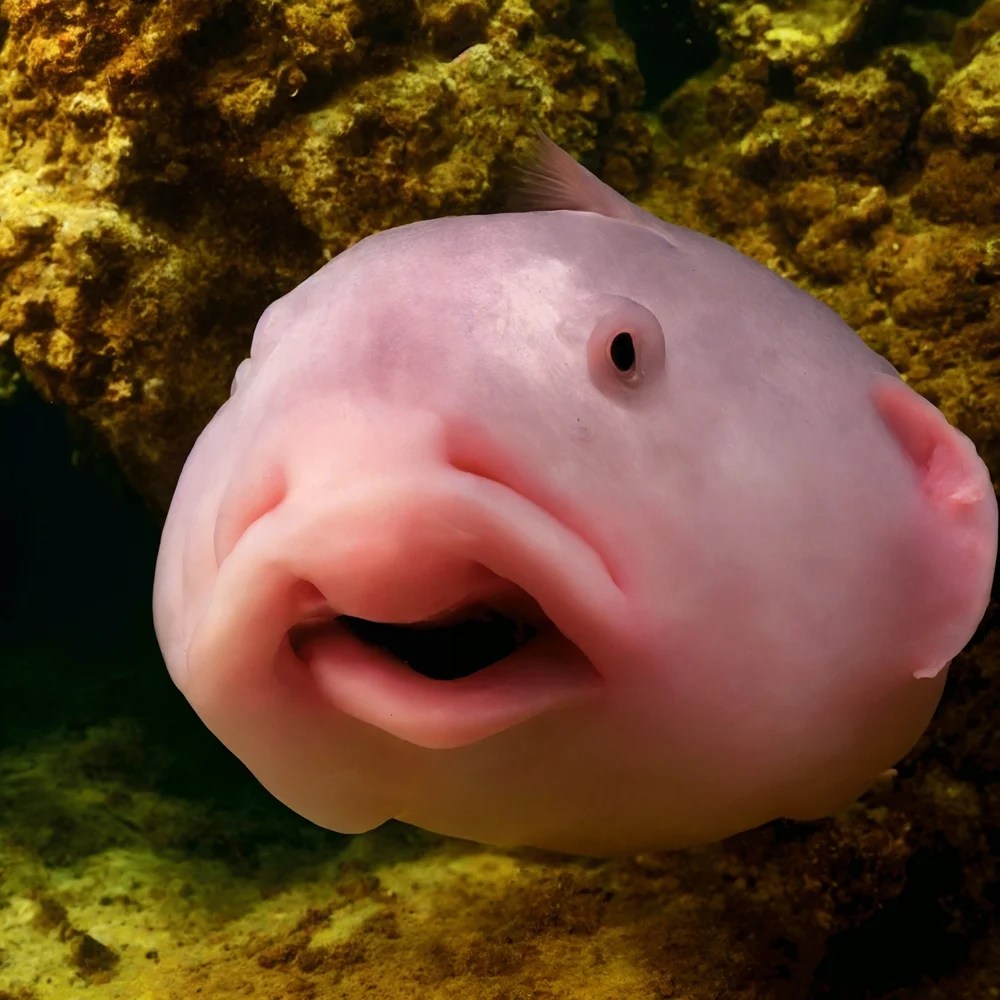Discovering The Mysteries Of The Blobfish In Water
When most people think of the ocean, they conjure images of vibrant coral reefs, sleek dolphins, and majestic whales. However, lurking in the depths of the ocean is a creature that challenges our perceptions of beauty: the blobfish. In its natural habitat, the blobfish presents a fascinating study of adaptation and survival in extreme environments. Unlike most fish, the blobfish has a unique gelatinous structure that allows it to thrive in the deep sea, where pressure is intense and food is scarce. But what does this peculiar creature look like in water, and how does it interact with its surroundings?
Blobfish, scientifically known as Psychrolutes marcidus, are primarily found in the deep waters off the coasts of Australia and Tasmania. These deep-sea dwellers have a reputation for being the "ugliest fish in the world." However, there's more to them than meets the eye. The blobfish’s appearance above water drastically differs from its appearance in its natural habitat. When taken out of the water, the blobfish’s body collapses due to the lack of pressure, leading to its infamous droopy face. This article explores the intriguing life of the blobfish in water, its habitat, and the adaptations that make it one of the ocean's most unique creatures.
As we delve deeper into the world of the blobfish, we will uncover fascinating facts about its biology, behavior, and the challenges it faces due to environmental changes. Understanding the blobfish in water can give us insights into the broader ecosystem of the deep sea and the importance of preserving these often-overlooked creatures. So, what exactly does the blobfish do in its watery domain, and why should we care about this seemingly unattractive fish?
What Does the Blobfish Look Like in Water?
The blobfish's appearance in water is markedly different from what we see in images. In its natural habitat, the blobfish's gelatinous body allows it to float effortlessly above the ocean floor. This adaptation is key for its survival, as it helps the blobfish conserve energy while searching for food. The blobfish has a large head and a round body, giving it a unique silhouette that is often described as 'blobby.'
How Does the Blobfish Adapt to Its Environment?
The blobfish inhabits depths of around 600 to 1,200 meters where the pressure is several dozen times greater than at sea level. To survive in such an extreme environment, the blobfish has evolved a body that is primarily made of a jelly-like substance, which is less dense than water. This allows the fish to remain buoyant without expending energy swimming. Additionally, the blobfish has a very slow metabolism, which is advantageous in an environment where food sources are limited.
What Do Blobfish Eat in Their Deep-Sea Habitat?
Blobfish primarily feed on small invertebrates, such as crustaceans and mollusks, which they consume by simply opening their mouths and allowing prey to enter. This passive feeding strategy is efficient in the deep sea, where food is often scarce. The blobfish's diet is crucial for its survival, and it plays a role in the marine ecosystem by helping to keep the populations of these smaller creatures in check.
Where Can You Find Blobfish in Water?
Blobfish are predominantly found in the waters off the coasts of Australia and Tasmania, where they inhabit the deep-sea environments. However, due to the challenges of deep-sea exploration, little is known about their exact distribution. The blobfish tends to stay near the ocean floor, where it can camouflage itself among the rocks and sediment, making it difficult for predators to spot.
Why Are Blobfish Considered Threatened?
Despite their strange appearance, blobfish are facing significant threats due to human activity. Overfishing and deep-sea trawling are two of the main causes of their decline. Many blobfish are often caught unintentionally in fishing nets, leading to a decrease in their population. Additionally, climate change and ocean acidification pose further risks to their habitat and food sources.
What Can Be Done to Protect Blobfish in Water?
Efforts to protect blobfish and their habitats are crucial for ensuring their survival. Some potential measures include:
- Implementing stricter regulations on deep-sea fishing practices.
- Creating marine protected areas to safeguard critical habitats.
- Conducting further research on blobfish populations and their ecosystems.
- Raising public awareness about the importance of preserving deep-sea biodiversity.
Can Blobfish Be Kept in Aquariums?
Keeping blobfish in aquariums poses significant challenges due to their specific environmental needs. They require high pressure and cold temperatures, which are difficult to replicate in a tank setting. Additionally, their gelatinous bodies make them susceptible to injury if not handled properly. As such, blobfish are not commonly found in aquariums, and their unique adaptations make them better suited for life in the deep sea.
Conclusion: Understanding the Blobfish in Water
The blobfish in water is an intriguing subject that highlights the diversity of life in our oceans. Despite its unusual appearance, this deep-sea creature plays a vital role in the marine ecosystem. By learning more about the blobfish and the challenges it faces, we can take steps toward protecting this unique species and the delicate balance of life in the deep sea. As we continue to explore the mysteries of the ocean, let us not forget the importance of preserving the less glamorous inhabitants of our waters.
Article Recommendations
- Harry And Meghans Daughter
- Benzema Children
- 15 Year Karmic Cycle Ending Meaning
- Laurie Taylor Williams
- Jan Bunch
- Holly Madison Husband
- Hanna Gucwinska
- John Alvin Actor
- Tom Felton Married
- Blake Griffin Relationships




